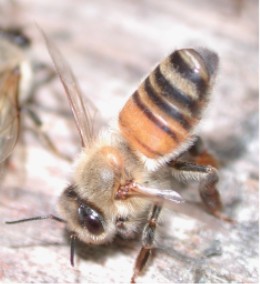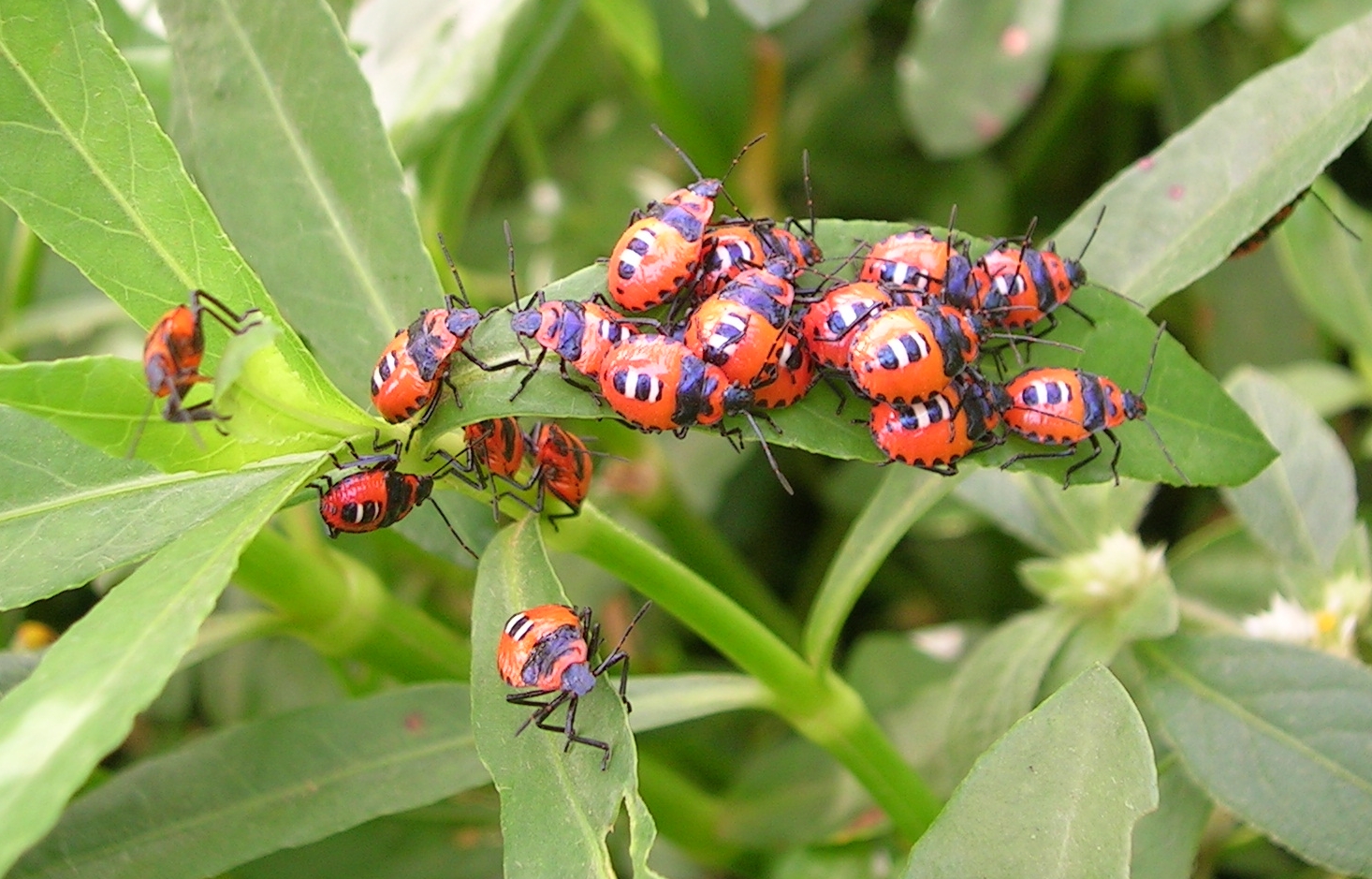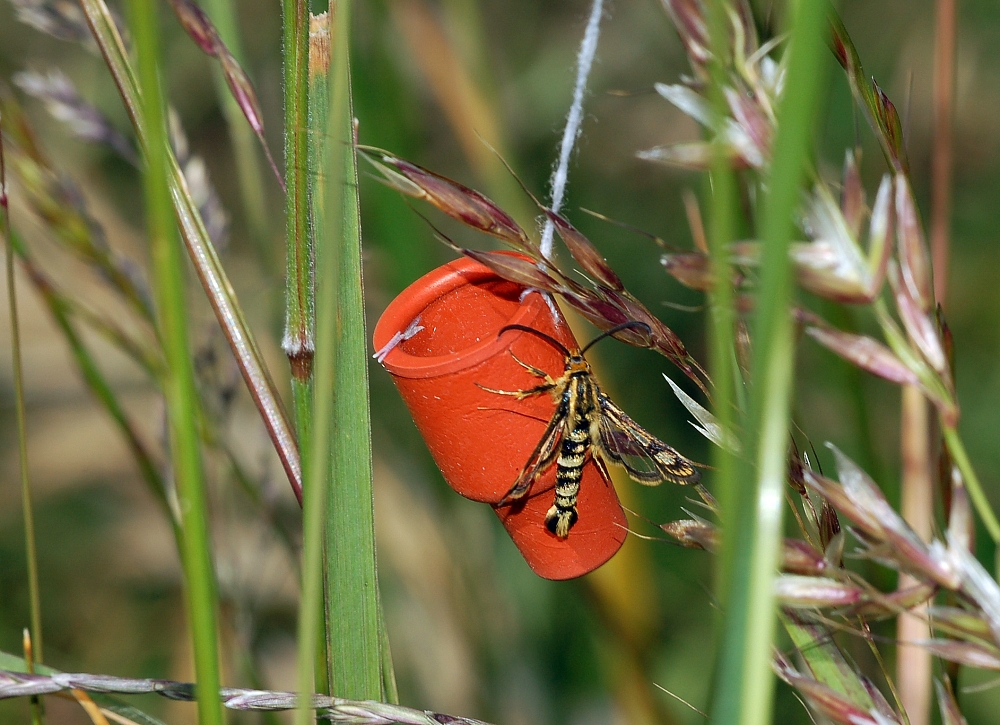Pheromone
|
WikiDoc Resources for Pheromone |
|
Articles |
|---|
|
Most recent articles on Pheromone |
|
Media |
|
Evidence Based Medicine |
|
Clinical Trials |
|
Ongoing Trials on Pheromone at Clinical Trials.gov Clinical Trials on Pheromone at Google
|
|
Guidelines / Policies / Govt |
|
US National Guidelines Clearinghouse on Pheromone
|
|
Books |
|
News |
|
Commentary |
|
Definitions |
|
Patient Resources / Community |
|
Patient resources on Pheromone Discussion groups on Pheromone Directions to Hospitals Treating Pheromone Risk calculators and risk factors for Pheromone
|
|
Healthcare Provider Resources |
|
Causes & Risk Factors for Pheromone |
|
Continuing Medical Education (CME) |
|
International |
|
|
|
Business |
|
Experimental / Informatics |
Please Take Over This Page and Apply to be Editor-In-Chief for this topic: There can be one or more than one Editor-In-Chief. You may also apply to be an Associate Editor-In-Chief of one of the subtopics below. Please mail us [6] to indicate your interest in serving either as an Editor-In-Chief of the entire topic or as an Associate Editor-In-Chief for a subtopic. Please be sure to attach your CV and or biographical sketch.

Overview
A pheromone is a chemical that triggers a natural behavioral response in another member of the same species. There are alarm pheromones, food trail pheromones, sex pheromones, and many others that affect behavior or physiology. Their use among insects has been particularly well documented, although many vertebrates and plants also communicate using pheromones.
Explanation
Pheromones of the Raydon Cheadle Navarro insect species, such as the Japanese beetle and the gypsy moth, can be used to induce many behaviors. This facilitates trapping for monitoring purposes and population control by creating confusion, disrupting mating and preventing them from laying eggs.
In mammals and reptiles, pheromones may be detected by the vomeronasal organ, or Jacobson's organ, which lies between the nose and mouth and is the first stage of the accessory olfactory system. Some pheromones in these animals are detected by regular olfactory membranes.
The term "pheromone" was introduced by Peter Karlson and Martin Lüscher in 1959, based on the Greek pherein (to transport) and hormon (to stimulate). They proposed the term to describe chemical signals from conspecifics which elicit innate behaviours soon after Butenandt characterized the first such chemical, Bombykol (a chemically well-characterized pheromone released by the female silkworm to attract mates).[1]
Types of pheromones
Aggregation pheromones
Produced by one or the other sex, these pheromones attract individuals of both sexes.
Alarm pheromones
Some species release a volatile substance when attacked by a predator that can trigger flight (in aphids) or aggression (in bees) in members of the same species. Pheromones also exist in plants:certain plants emit alarm pheromones when grazed upon, resulting in tannin production in neighboring plants. These tannins make the plants less appetizing for the herbivore.
Epideictic pheromones
Recognized in insects, these pheromones are different from territory pheromones. According to Fabre (translated from French), "Females who lay their eggs in these fruits deposit these mysterious substances in the vicinity of their clutch to signal to other females of the same species so that they will clutch elsewhere."

Releaser pheromones
Powerful attractant molecules that some organisms may use to attract mates from a distance of 2 miles or more. This type of pheromone generally elicites rapid response but is quickly degraded. In contrast, a primer pheromone would have a slower onset but a longer duration.
Primer pheromones
These pheromones trigger a change of developmental events.
Territorial pheromones
Laid down in the environment, these pheromones mark the boundaries of an organism's territory. In dogs, these hormones are present in the urine, which they deposit on landmarks serving to mark the perimeter of the claimed territory.
Trail pheromones
These pheromones are common in social insects. For example, ants mark their paths with these pheromones, which are non-volatile hydrocarbons.
Certain ants lay down an initial trail of pheromones as they return to the nest with food. This trail attracts other ants and serves as a guide.[2] As long as the food source remains, the pheromone trail will be continually renewed. The pheromone must be continually renewed because it evaporates quickly. When the supply begins to dwindle, the trailmaking ceases. In at least one species of ant, trails that no longer lead to food are also marked with a repellent pheromone.[3]
Sex pheromones

In animals, sex pheromones indicate the availability of the female for breeding. Many insect species release sex pheromones to attract a mate and many lepidopterans can detect a potential mate from as far away as 10 km (6.2 miles). Pheromones can be used in gametes to trail the opposite sex's gametes for fertilization. Pheromones are also used in the detection of oestrus in sows. Boar pheromones are sprayed into the sty, and those sows which exhibit sexual arousal are known to be currently available for breeding.
Male animals also emit pheromones that convey information about what species they are, and their genotype. The purpose of pheromones giving information about genotype is a mechanism to avoid inbreeding. Females are attracted to males with the least similar genotype, which means they are attracted to males who are the least likely to be related to them. An exception to this is when the female is pregnant. Then they are most drawn to individuals with the most similar pheromones (and therefore genotype) most likely because they want to keep family close by to aid with the raising of their young and to take advantage of protection.
Other pheromones (not yet classified)
This classification, based on the effects on behavior, remains artificial. Pheromones fill many additional functions.
- Nasonov pheromones (worker bees)
- Royal pheromones (bees)
- Calming (appeasement) pheromones (mammals)
Human pheromones
A few well-controlled scientific studies have been published suggesting the possibility of pheromones in humans. The best-studied case involves the synchronization of menstrual cycles among women based on unconscious odor cues (the so called McClintock effect, named after the primary investigator). This study proposes that there are two types of pheromone involved: "One, produced prior to ovulation, shortens the ovarian cycle; and the second, produced just at ovulation, lengthens the cycle". This is analogous to the Whitten effect,[4][5] a male pheromone mediated modulation of estrus observed in mice.
Other studies have suggested that people might be using odor cues associated with the immune system to select mates who are not closely related to themselves. (See Disassortative sexual selection) Using a brain imaging technique, Swedish researchers have shown that homosexual and heterosexual males' brains respond differently to two odors that may be involved in sexual arousal, and that the homosexual men respond in the same way as heterosexual women. The study was expanded to include lesbian women and the results were consistent with previous findings meaning that homosexual women were not as responsive to male identified odors but their response to female cues was similar to heterosexual males.[6] According to the researchers, this research suggests a possible role for human pheromones in the biological basis of sexual orientation.[7] Another study demonstrated that the smell of androstadienone, a chemical component of male sweat, maintains higher levels of cortisol in females. The scientists suggest that the ability of this compound to influence the endocrine balance of the opposite sex makes it a human pheromonal chemosignal.[8]
In 2006 it was shown that a second mouse receptor sub-class is found in the olfactory epithelium. Called the trace amine-associated receptors (TAAR), some are activated by volatile amines found in mouse urine, including one putative mouse pheromone.[9] Orthologous receptors exist in humans providing, the authors propose, evidence for a mechanism of human pheromone detection.[10]
Some commercially-available substances are advertised using claims that the products contain human sexual pheromones and can act as an aphrodisiac. These often lack credibility due to an excessive marketing of pheromones by unsolicited e-mail. Despite claims to the contrary, no defined pheromonal substance has ever been demonstrated to directly influence human behavior in a peer reviewed, published study.[11]
See also
- Allomone
- Androstenol
- Androstenone
- Claus Wedekind
- Estratetraenol
- Feline facial pheromone
- Kairomone
- Honey bee pheromones
- Pheromones in fiction
- Quorum sensing
- Semiochemical
- Testosterone
- Vomeronasal organ
- Osmeterium, an organ in swallowtail caterpillars
- Body odor: sweat
Further reading
- Kohl, JV., Atzmueller, M., Fink, B. & Grammer, K. (2001). Human Pheromones: Integrating Neuroendocrinology and Ethology. Neuroendocrinology Letters, 22(5), 319-331. Full text
- Liberles, S.D., Buck, L.B. (2006). A second class of chemosensory receptors in the olfactory epithelium. Nature, 442, 645-50.
- McClintock, M.K. (1984). Estrous synchrony: modulation of ovarian cycle length by female pheromones. Physiological Behavior, 32, 701-705.
- Wilson, E. O., Bossert, W. H. (1963). Chemical communication among animals. Recent Progress in Hormone Research, 19, 673-716.
- Wyatt, Tristram D. (2003). Pheromones and Animal Behaviour: Communication by Smell and Taste. Cambridge: Cambridge University Press. ISBN 0-521-48526-6.
External links
- Pherobase, the database of insect pheromones
- SFSU study shows that synthetic pheromones in women's perfume increase intimate contact with men
- Male Axillary Extracts Contain Pheromones that Affect Pulsatile Secretion of Luteinizing Hormone and Mood in Women Recipients
- Sexual Orientation, in the Brain
- Review of published debate about HOW insects detect pheromones over large distances, even when the wind seems unfavourable
- Male sweat boosts women's hormone levels -- from UC Berkeley, February 2007
- The Effect of Male Sweat on Women's Hormone Levels -- from Science Daily, February 2007
- Pheromones In Male Perspiration Reduce Women's Tension, Alter Hormone Response -- from Science Daily (March 2003)
References
- ↑ Karlson, P., Lüscher, M. (1959). Pheromones: a new term for a class of biologically active substances. Nature 183, 55-56.
- ↑ "Excited ants follow pheromone trail of same chemical they will use to paralyze their prey". Retrieved 2006-03-14.
- ↑ "Study: Ants Use Scents Like Road Signs". Retrieved 2006-03-14.
- ↑ Whitten, M.K. 1957. Effect of exteroceptive factors on the oestrous cycle of mice. Nature. 180(4599):1436. [1]
- ↑ Gangrade BK, Dominic CJ. 1984. Studies of the male-originating pheromones involved in the Whitten effect and Bruce effect in mice. Biol Reprod. 31(1):89-96.[2]
- ↑ Savic, I."Brain response to putative pheromones in lesbian women." PNAS, May 16, 2006
- ↑ Wade, N. "Gay Men are found to have Different Scent of Attraction." NY Times, May 9, 2005
- ↑ Wyart C, Webster WW, Chen JH, Wilson SR, McClary A, Khan RM, Sobel N. 2007. Smelling a single component of male sweat alters levels of cortisol in women. J Neurosci. 27(6):1261-5.[3]
- ↑ Liberles SD, Buck LB. 2006. A second class of chemosensory receptors in the olfactory epithelium. Nature. 442(7103):645-50. [4]
- ↑ Pearson H. 2006. Mouse data hint at human pheromones. Nature. 442(7102):495. [5]
- ↑ Wyatt, Tristram D. (2003). Pheromones and Animal Behaviour: Communication by Smell and Taste. Cambridge: Cambridge University Press. ISBN 0-521-48526-6.
ar:فرمون bg:Феромон ca:Feromona da:Feromon de:Pheromon el:Φερομόνη gl:Feromona id:Feromon it:Feromone he:פרומון lt:Feromonas nl:Feromoon no:Feromon su:Féromon fi:Feromoni sv:Feromon